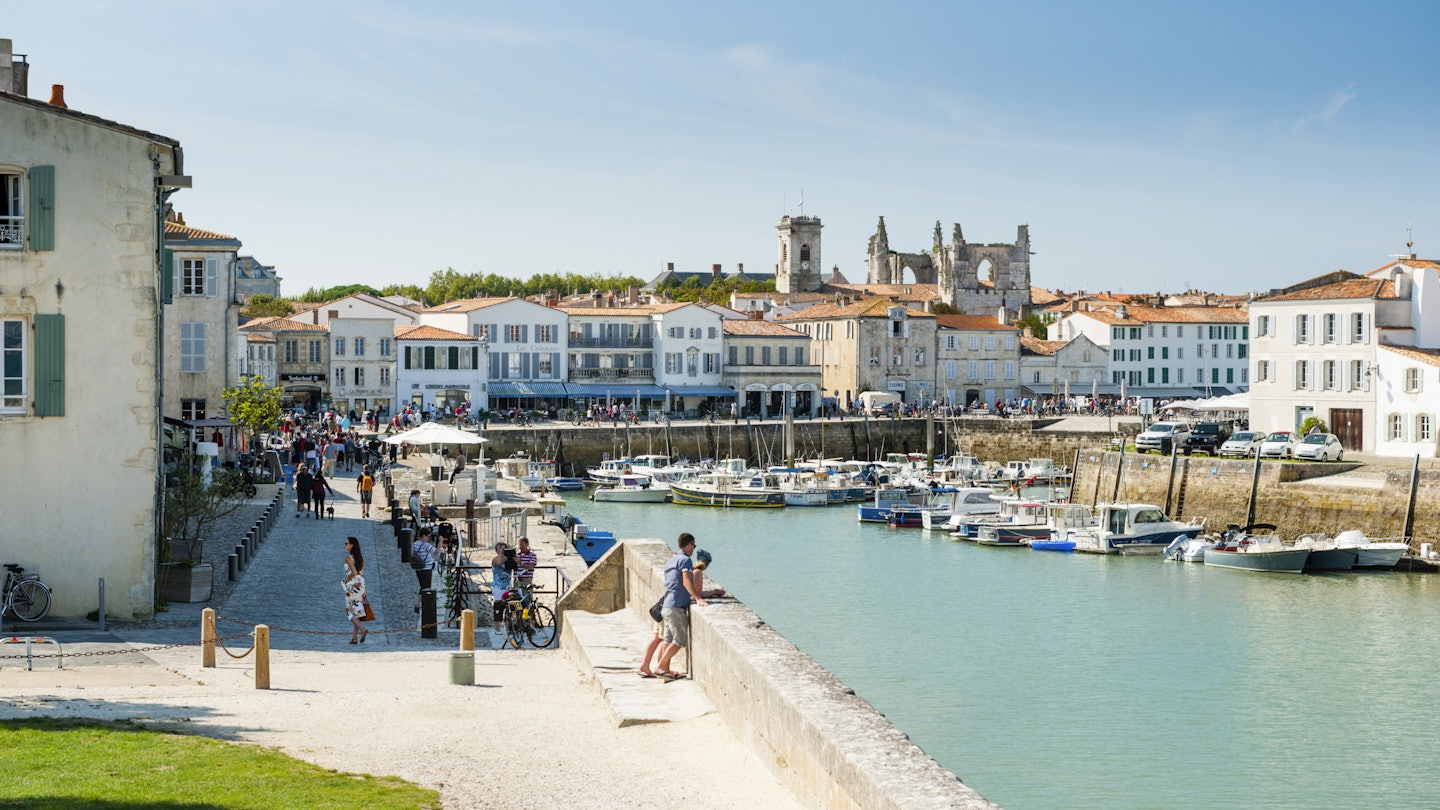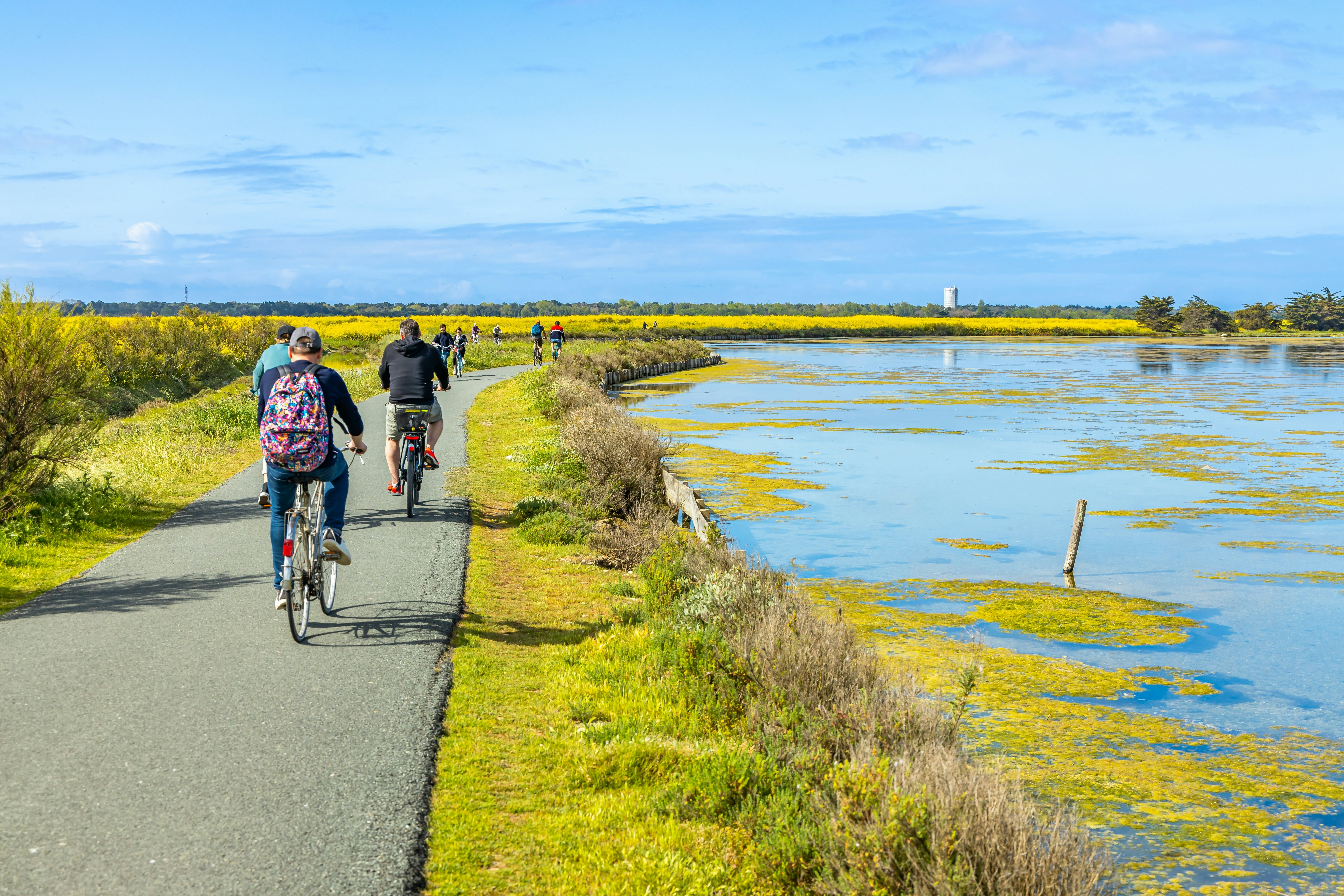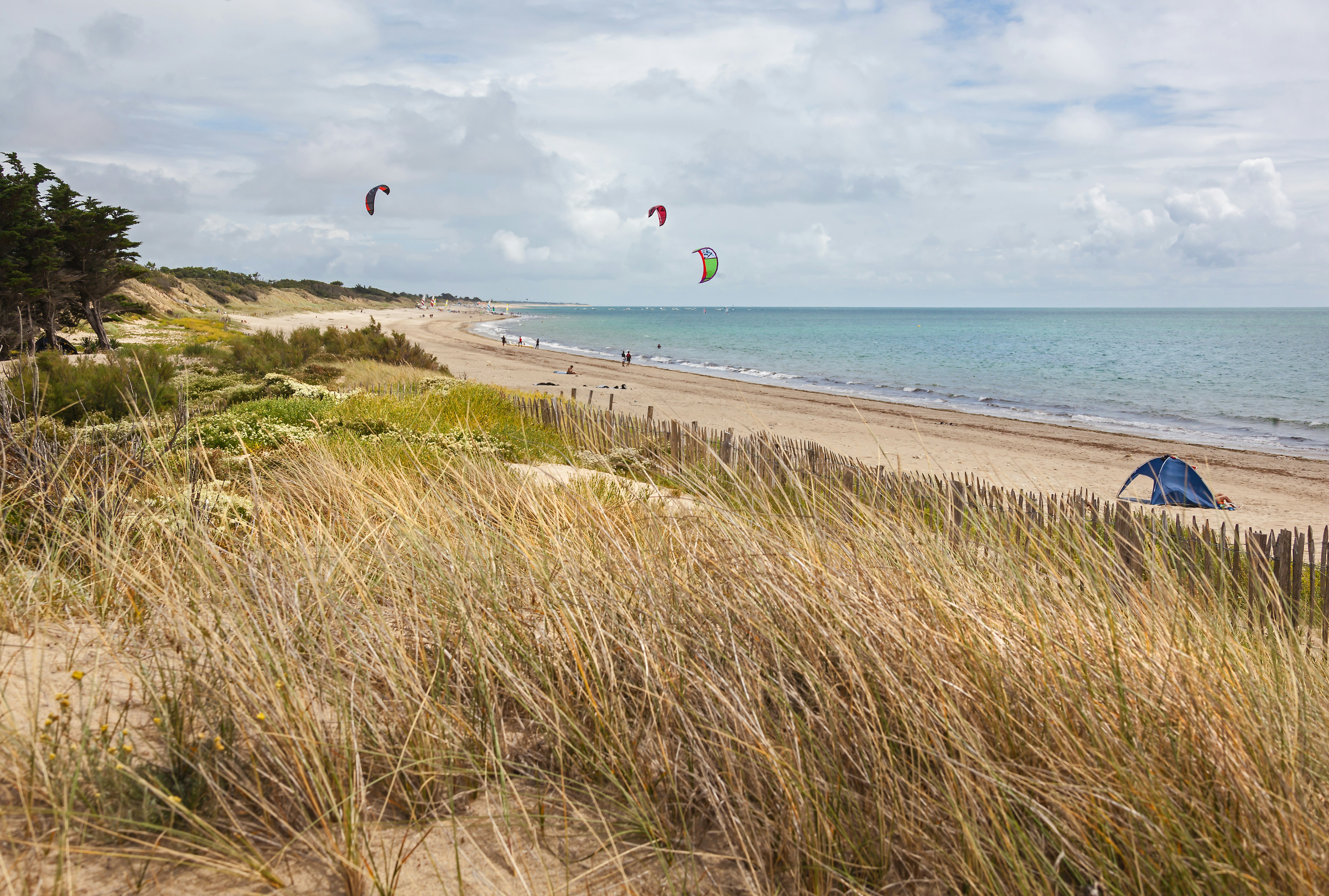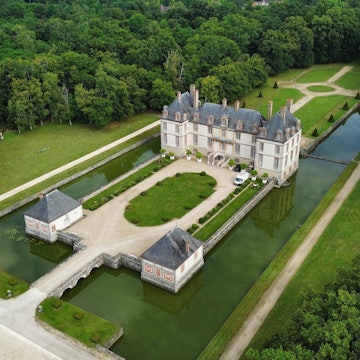

The harbor of Saint-Martin-de-Ré on Île de Ré. Justin Foulkes for Lonely Planet
It’s a wonder Île de Ré exists. For starters, this French island is crêpe-flat (and its beaches are the same color as pancake batter). When the swell comes rolling in along the west and south coasts – this is the Atlantic Ocean after all – it’s difficult to comprehend how the sea doesn’t swallow the island whole.
This isn’t your simple fly-and-flop island – the architecture here tells the stories of wealthy merchants that traded Île de Ré’s salt and wine for stones to build their homes. Cycle into the heart of the island, and you’ll either find yourself surrounded by vineyards or on the curious criss-cross of paths raised above the salt flats, where oyster dredgers’ huts look over party hat-shaped piles of salt.
Extremely accessible, with a bridge linking it to La Rochelle on the mainland, it’s not surprising that it’s a favorite with bucket-and-spade waving French families as soon as the holidays hit. There are all kinds of beaches to choose from whether you're looking for windsurfing, paddleboarding, or to hide from the wind among the sand dunes with a good book.

When should I go to Île de Ré?
The island is highly seasonal and often awash with Parisians during the summer holidays. But visit in winter and it will feel pretty empty; the year-round population of the whole island is under 18,000. There’s something oddly magical about winter when the Atlantic storms sweep in, and since the island is linked to the mainland by a bridge, you don’t need to worry about getting marooned in inclement weather.
If you do go in summer, beware that visitor numbers are in the millions, and the vast majority arrive in July and August. The weather is reliably warm and sunny, but accommodations are at a premium, and you’ll need to book well in advance. Most of the island’s festivals take place in the summer. Jazz au Phare (Jazz at the Lighthouse) runs for five days in early August at the Phare des Baleines, the lighthouse at the westernmost tip of the island. You'll have to pay to attend the main events of the festival but it runs alongside a program of free events, including cafe concerts.
June and September are lovely months to visit. Accommodations and activities are open for high season, and salt harvesting season is underway.

How much time should I spend in Île de Ré?
If you want to holiday French-style, camp out here for a whole month, spending long, lazy days at the beach, or pedaling languidly from oyster shack to oyster shack. If you don’t benefit from the same generous vacation allowance, you could easily see the whole island in three or four days, and that’s exploring by bike: the cycle trails are all flat.
When I was a child we’d go for a week. That worked well, but I’d never have said no to longer. Factor in travel time to La Rochelle, the mainland city from which you access Ile de Ré. There are direct flights from the UK; from the United States you’ll likely arrive in Paris or Bordeaux, each 2 hours 30 minutes from La Rochelle by train.

Is it easy to get in and around Île de Ré?
Cycling isn’t just a mode of transport here, it’s a religion. Île de Ré isn’t car-free but driving isn’t the most efficient way of getting from A to B; partly since parking is limited and often very expensive, and partly because all of the roads are pockmarked with dozens of crossings for pedestrians and cyclists, who have priority. Many of the historic little towns, such as Saint-Martin-de-Ré, have narrow little cobbled streets, making squeezing through in an SUV stressful and unpleasant. There’s also a fantastic network of electric shuttle buses on the island, which are completely free for visitors.
Upon arrival (by road, via the bridge), there’s a compulsory entry toll of €8–16, depending on the season. This fee goes towards preserving the island’s nature and funding fantastic projects like the free shuttle buses. There’s no fee for leaving. It’s also possible to arrive by sailing boat, and you can bring your bike on board.
Top things to do in Île de Ré
Kayak the marshes at Loix
Kayaking around Loix is a little like parkour on water. Not because it’s extreme – far from it in fact, it’s the perfect day out for families – but because the constantly changing tides mean that you can paddle up little creeks where you’ll often need to slide your kayak down mudbanks, or wade through the mud, to get out again. Canoë Salé runs guided tours, which are invaluable in such a labyrinth. From above, the warren of marshes and salt flats looks like a patchwork quilt.
Off the water, Loix looks like one of the more uninspiring towns on the island, but it’s one of the most lived in, with heaps of character. It’s home to the island’s best bookshop, Atelier Quillet, which has an onsite cafe serving coffees made with locally roasted beans. There’s also a workshop specializing in the restoration of old documents. See how they do it on a guided tour (€5).

Explore the pretty streets of Saint-Martin-de-Ré
A fishing town with a strategic location, Saint-Martin-de-Ré came into its own in the Middle Ages, when it was used for trade and as a military base. In the 17th century, the famous military engineer Vauban fortified the town to resist Dutch and English invasions, and much of the ramparts and imposing entrance arch are still standing today.
The streets look as though they’ve been plucked from the imagination of an interior designer. Most of the houses are whitewashed or pastel-colored, with brightly painted shutters and an abundance of creeping plants and bulging window boxes. Along the old harbor are heaps of restaurants, most specializing in seafood and some are very upmarket. Locals head to no-frills Le Bistrot du Marin.
Learn to surf at Le Bois Plage
Particularly during the summer, the surf on Île de Ré tends to be pretty gentle, with consistent waves perfect for beginners. Surf’in Ré has a surf school on Gros Joncs Beach, a golden sand beach framed by dunes and a long, raised wooden boardwalk.
Eat oysters in the salt flats
The only thing there’s more of than oyster fields on Île de Ré is vineyards, and wine and oysters make for a heady combination. On Ile de Ré, you're never far from an oyster shack. Particularly worth visiting is La Cabane Océane, where you can eat oysters al fresco with a view over the sea.

Spend time on beach
There’s a beach for everyone here, whether your style is sunbathing, relaxing with a chilled glass of wine in hand, or filling your day with surfing, kite surfing, windsurfing and paddleboarding. Among the prettiest is Trousse Chemise Beach, which rather oddly translates as "Shirt Bag Beach." Just offshore is a sandbank known as Le Banc du Bûcheron, only visible at low tide. Arrive at the right moment and you can walk out and picnic on the sandbar. Many of the beaches have rocks in the water; pack appropriate shoes.
How much money do I need for Île de Ré?
While restaurants and activities tend to cost roughly the same as on the mainland, accommodations can be significantly higher, particularly in the summer holidays. Cards are widely accepted, but it’s a good idea to have some cash, particularly for the little oyster shacks. The following prices are based on the high season (July–August).
Campsite: from €30 for two people with their own tent
Basic room for two: from €150
Self-catering apartment (including Airbnb): from €100
Bike rental: from €15/day
Shuttle bus ticket: free!
Coffee: from €2 for an espresso
Sandwich: €6–12
Dinner for two: €55+
Beer/pint at the bar: €8













